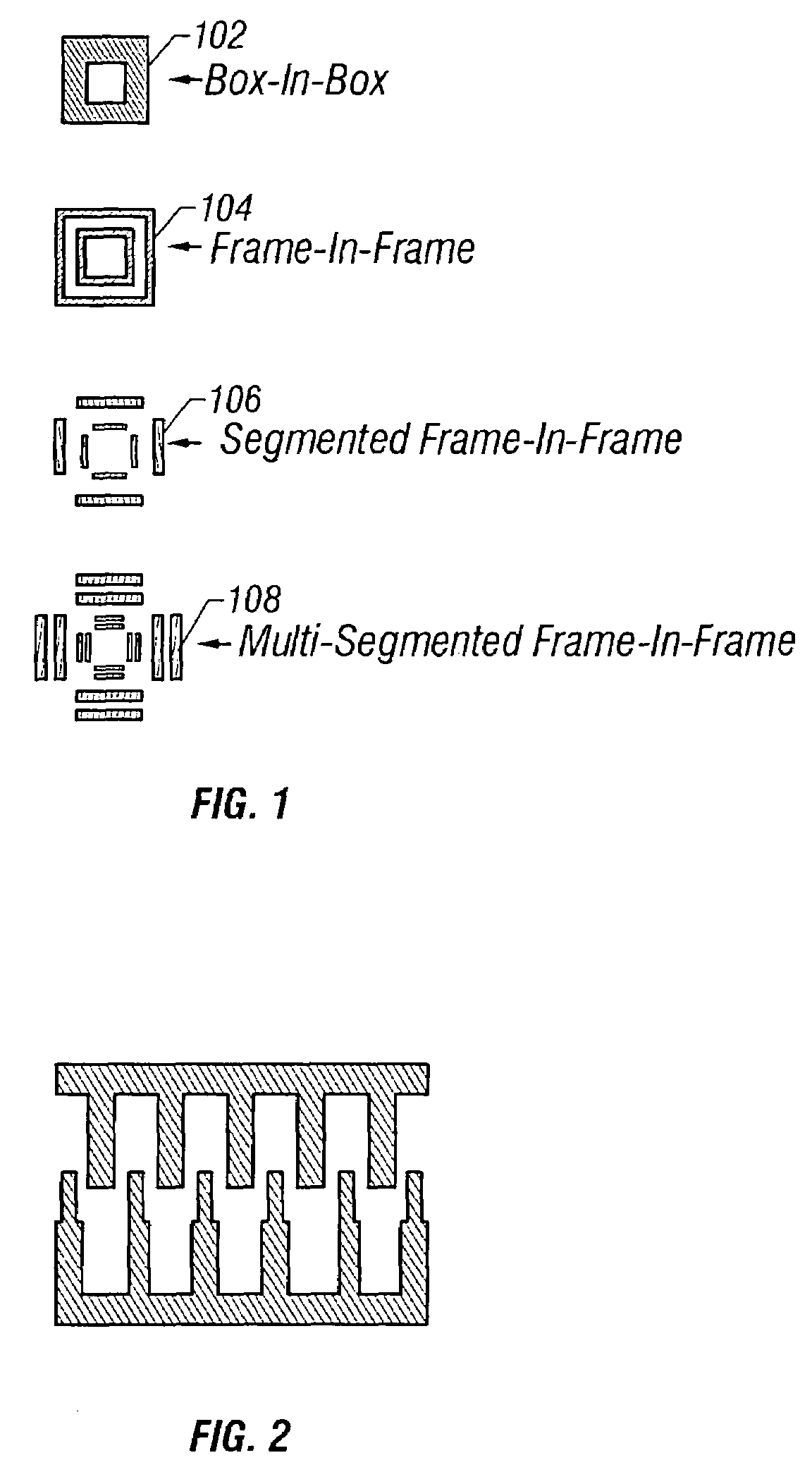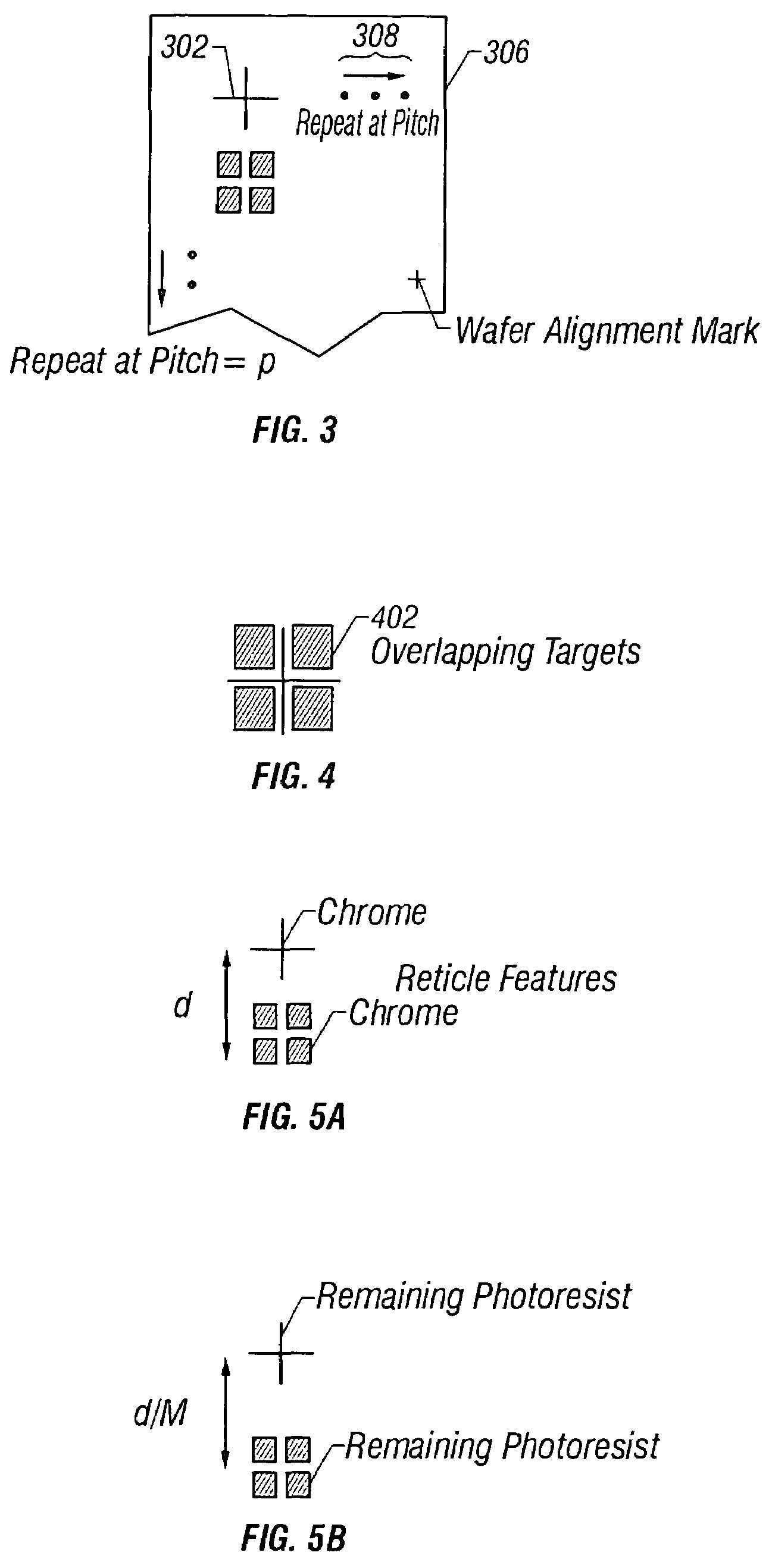Reference wafer and process for manufacturing same
a technology of reference wafers and manufacturing processes, applied in the field of semiconductor manufacturing, to achieve the effect of very accurate determination
- Summary
- Abstract
- Description
- Claims
- Application Information
AI Technical Summary
Benefits of technology
Problems solved by technology
Method used
Image
Examples
Embodiment Construction
[0066]The effects of overlay error are typically divided into two major categories for the purpose of quantifying overlay error and making precise exposure adjustments to correct the problem. The first category, referred to as grid or rotation 1110 as illustrated in FIG. 11A, or yaw 115 as illustrated in FIG. 11B, of each exposure pattern, exposure field, or simply field, with reference to the nominal center position of the wafer. These global or inter-field positional errors may be caused by the wafer stage subsystem of the photolithographic exposure tool. Overlay modeling algorithms typically divide grid or inter-field error into various sub-categories or components the most common of which are translation, rotation, magnification or scale, non-orthogonality, stage distortion and stage rotation. See Matching Performance for Multiple Wafer Steppers using and Advanced Metrology Procedure, supra.
[0067]The second category, intra-field overlay error is the positional offset of an indiv...
PUM
| Property | Measurement | Unit |
|---|---|---|
| stepper projection imaging | aaaaa | aaaaa |
| scanning projection imaging system | aaaaa | aaaaa |
| electron beam imaging | aaaaa | aaaaa |
Abstract
Description
Claims
Application Information
 Login to View More
Login to View More - R&D
- Intellectual Property
- Life Sciences
- Materials
- Tech Scout
- Unparalleled Data Quality
- Higher Quality Content
- 60% Fewer Hallucinations
Browse by: Latest US Patents, China's latest patents, Technical Efficacy Thesaurus, Application Domain, Technology Topic, Popular Technical Reports.
© 2025 PatSnap. All rights reserved.Legal|Privacy policy|Modern Slavery Act Transparency Statement|Sitemap|About US| Contact US: help@patsnap.com



